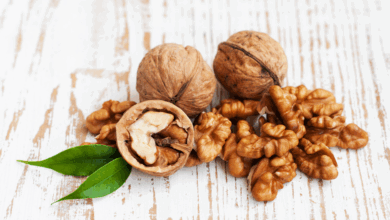
Apples and tea can protect against cancer heart disease. This exploration delves into the nutritional powerhouses of apples and tea, examining their individual benefits and the potential synergistic effects of consuming them together. We’ll uncover the vitamins, minerals, and antioxidants within these fruits and beverages, exploring their possible role in preventing both cancer and heart disease. The journey into the fascinating world of these everyday foods will illuminate the science behind their potential health advantages, leading to a more holistic understanding of their impact on overall well-being.
Apples, in various forms and varieties, offer a wide array of nutrients, from vitamin C to fiber. Similarly, tea, with its diverse types and preparation methods, contains powerful antioxidants. This discussion will explore the mechanisms behind how these compounds might interact to protect against diseases. We’ll analyze the scientific research supporting these claims, while also acknowledging potential limitations and the importance of a balanced lifestyle.
Apples and Their Nutritional Composition
Apples, a ubiquitous fruit enjoyed worldwide, are more than just a delicious snack. Their nutritional profile is surprisingly rich, offering a variety of vitamins, minerals, and antioxidants that contribute to overall health. This exploration delves into the detailed nutritional composition of apples, examining different varieties, and comparing their value to other fruits. We’ll also touch upon the cultivation process and its environmental impact.
Nutritional Content Breakdown
Apples are a good source of various nutrients. Their nutritional value varies depending on the variety, growing conditions, and stage of ripeness. Key nutrients include vitamins (like vitamin C and vitamin K), minerals (potassium, fiber, and others), and a wealth of antioxidants. These compounds play a crucial role in protecting cells from damage and may contribute to a reduced risk of chronic diseases.
| Nutrient | Amount per Serving (approx.) | Potential Health Benefits |
|---|---|---|
| Fiber | 4-5 grams | Promotes digestive health, helps regulate blood sugar levels, and contributes to satiety. |
| Vitamin C | 5-10 mg | Supports immune function, promotes collagen production, and acts as an antioxidant. |
| Potassium | 100-200 mg | Important for maintaining healthy blood pressure. |
| Antioxidants (e.g., quercetin) | Variable, depending on variety | May help protect against cell damage, reduce inflammation, and contribute to overall health. |
| Vitamin K | Small amounts | Plays a role in blood clotting and bone health. |
| Vitamin A | Trace amounts | Contributes to healthy vision and immune function. |
Apple Varieties and Nutritional Variations
Different apple varieties exhibit slight variations in their nutritional profiles. For example, Granny Smith apples are often higher in vitamin C compared to Honeycrisp apples. Red Delicious apples might have slightly different antioxidant compositions compared to Fuji apples.
Comparison with Other Fruits
Apples compare favorably to other fruits in terms of nutritional content. While bananas are a good source of potassium, apples offer a wider range of vitamins and minerals. Oranges, known for their vitamin C content, might be a close competitor in certain aspects, but apples also provide significant amounts of fiber and antioxidants.
Cultivation and Environmental Impacts
The cultivation and harvesting of apples can have varying environmental impacts depending on the farming practices. Sustainable farming methods that prioritize soil health, water conservation, and reduced pesticide use are crucial for minimizing environmental harm. Organic farming practices often result in lower environmental impact compared to conventional methods. The use of genetically modified organisms (GMOs) in apple cultivation also presents potential environmental considerations.
Apples and tea seem to offer some protection against cancer and heart disease, which is great news for our health. But did you know that incorporating resistance training into your routine can also significantly improve sleep quality? For example, checking out this guide on how resistance training can help you sleep better will give you some solid tips.
Ultimately, a healthy lifestyle that includes good sleep habits, alongside a diet rich in fruits like apples and herbal teas, is key to a longer and healthier life.
Tea and Its Health Benefits: Apples And Tea Can Protect Against Cancer Heart Disease
From the ancient rituals of East Asia to modern-day wellness routines, tea holds a special place in global culture. Beyond its delicious taste, tea offers a wealth of potential health benefits. This exploration delves into the diverse world of teas, examining their unique compositions and the associated health advantages.Different types of tea, from the robust black to the delicate white, boast varying levels of antioxidants and other beneficial compounds.
These compounds play a vital role in protecting the body against cellular damage and contribute to overall well-being. Understanding the distinctions between these types and their preparation methods is key to maximizing the potential health benefits of this beloved beverage.
Types of Tea and Their Composition
Various types of tea are produced through different processing methods, leading to unique compositions. These processing differences impact the taste, aroma, and, crucially, the nutritional profile of each type.
- Black tea, a staple globally, undergoes a full oxidation process, resulting in a robust flavour and a higher level of certain compounds. The oxidation process is key in producing a range of bioactive compounds that contribute to its antioxidant properties.
- Green tea, prized for its vibrant colour and refreshing taste, is processed to prevent oxidation. This preservation of the leaf’s natural compounds results in a higher concentration of antioxidants and other beneficial elements.
- White tea, the least processed of all teas, retains the most delicate flavours and a significant amount of the leaf’s natural antioxidants. The minimal processing ensures the freshness of these antioxidants.
- Oolong tea, situated between green and black tea in terms of processing, features a unique profile of compounds that contribute to its diverse health benefits. The degree of oxidation determines the final product’s character, impacting the concentration of specific antioxidants.
Health Benefits Associated with Tea Consumption
The potential health benefits of tea consumption are numerous and often linked to the presence of antioxidants and other bioactive compounds. These compounds, like catechins, contribute to the protective effects on health.
Apples and tea seem to offer protection against cancer and heart disease, highlighting the crucial role diet plays in overall health. Considering diet as a major treatment option for multiple sclerosis (MS), as discussed in depth in this article about diet as major ms treatment , underscores the importance of a healthy lifestyle. This underscores the power of choices like enjoying apples and tea, both for preventative measures and a holistic approach to health.
- Antioxidant properties are often cited as a key reason for the health benefits associated with tea. These antioxidants combat free radicals, which can cause cellular damage and contribute to chronic diseases. The variety of antioxidants present in different teas suggests a diverse range of potential health benefits.
- Certain bioactive compounds in tea have been linked to potential improvements in cardiovascular health. These compounds may contribute to lowering blood pressure and improving blood vessel function.
- Some studies suggest that tea consumption might have a positive impact on cognitive function. The presence of specific compounds in tea may contribute to improved memory and alertness.
Comparative Analysis of Antioxidant Content
The antioxidant content varies among tea types, reflecting the differences in processing methods. This variation is a key factor in understanding the potential health benefits associated with each type.
- Green tea, with its minimal processing, often boasts a higher concentration of antioxidants, particularly catechins, compared to black tea. This higher concentration suggests a stronger protective effect against cellular damage.
- White tea, due to its minimal oxidation, typically maintains a significant amount of the leaf’s original antioxidants. This can translate to potential health advantages compared to other tea types.
- Black tea, although undergoing a full oxidation process, still contains antioxidants, although in potentially varying quantities compared to green or white tea. The unique profile of antioxidants in black tea may offer distinct health benefits.
Tea Types, Origins, and Potential Health Benefits
This table showcases the diverse types of tea, their origins, and their potential health benefits. The origins and cultivation methods contribute to the unique flavour and composition of each tea type.
| Tea Type | Origin | Potential Health Benefits |
|---|---|---|
| Black Tea | China, India, Sri Lanka | Potential improvements in cardiovascular health, and antioxidant properties |
| Green Tea | China, Japan | High antioxidant content, potential benefits for cognitive function |
| White Tea | China | High concentration of antioxidants, potential benefits for cardiovascular health |
| Oolong Tea | China | Unique combination of antioxidants and potential health benefits associated with the degree of oxidation |
Impact of Tea Preparation Methods on Nutritional Value
The methods used to prepare tea can influence the final product’s nutritional value. Factors like water temperature and steeping time play a role in extracting the beneficial compounds.
- Steeping temperature directly affects the extraction of antioxidants and other bioactive compounds. Higher temperatures may extract more compounds but could also potentially degrade some of them.
- Steeping time influences the amount of compounds extracted from the tea leaves. Longer steeping times can result in a stronger flavour but may also lead to a greater extraction of potentially less desirable compounds.
Potential Mechanisms of Action
Apples and tea, enjoyed by millions worldwide, have long been associated with potential health benefits, including protection against cancer and heart disease. Delving into the potential mechanisms behind these effects reveals a fascinating interplay of bioactive compounds and their impact on cellular processes. Understanding these mechanisms can further illuminate the rationale behind dietary recommendations and inform future research.This exploration delves into the specific compounds within apples and tea that may contribute to these protective effects.
We’ll examine the biological pathways through which these compounds act, and consider the available research on the combined effects of apples and tea consumption. The crucial role of dietary fiber in supporting these potential health benefits will also be addressed.
Specific Compounds and Their Effects
Apples and tea are rich sources of various bioactive compounds. These compounds, including polyphenols, flavonoids, and fiber, exhibit antioxidant and anti-inflammatory properties. Polyphenols, such as quercetin and catechins, are particularly potent antioxidants, scavenging free radicals and protecting cells from damage. Flavonoids, abundant in both apples and tea, have been linked to reducing inflammation and blood clotting, both of which play a role in heart disease.
The unique combination of compounds found in these foods may offer synergistic effects, amplifying their overall health benefits.
Potential Biological Mechanisms
The protective effects of these compounds stem from their influence on various biological processes. Antioxidant activity helps prevent oxidative stress, a key contributor to cell damage and aging. Anti-inflammatory effects can mitigate the development of chronic diseases. Specific mechanisms include modulation of gene expression, regulation of enzyme activity, and inhibition of inflammatory pathways. These actions can potentially slow or prevent the development of cancer and heart disease.
Research on the Interaction Between Apples and Tea
While research on the combined effect of apples and tea on cancer and heart health is not as extensive as studies on individual components, some promising findings have emerged. One study found that a diet rich in both apples and tea was associated with a lower risk of certain types of cancer. Another study suggests that the combined consumption of these foods might lead to improvements in cardiovascular health markers.
More research is needed to fully understand the synergistic effects and the precise mechanisms involved.
Summary of Studies Investigating the Link Between Apple and Tea Consumption and Disease Prevention
A structured summary of studies investigating the link between apple and tea consumption and disease prevention is not readily available in a concise format. However, numerous individual studies have explored the effects of apples and tea on various health markers, including oxidative stress, inflammation, and blood pressure. The evidence, though not conclusive in demonstrating a direct interaction between apples and tea in disease prevention, suggests potential benefits.
This warrants further investigation, focusing on specific compounds and their combined effects.
Role of Dietary Fiber in Protective Effects
Dietary fiber, abundant in both apples and tea, plays a crucial role in supporting overall health. Fiber promotes healthy digestion, improves gut microbiota balance, and helps regulate blood sugar levels. The presence of insoluble fiber in apples and soluble fiber in tea contribute to these beneficial effects. In addition to their direct effects, the compounds in apples and tea may interact with dietary fiber to enhance their overall health benefits.
Potential Interactions and Synergies

Apples and tea, both rich in beneficial compounds, may offer enhanced health benefits when consumed together. The combined effects could stem from synergistic interactions between the bioactive components of each, potentially amplifying their individual protective properties. Understanding these potential interactions is crucial for maximizing the health benefits of incorporating both into a balanced diet.Apples, known for their high fiber content and polyphenols, and tea, rich in antioxidants and catechins, may work together to improve cardiovascular health, blood sugar control, and overall well-being.
Synergistic Effects on Antioxidant Capacity
The combined consumption of apples and tea may synergistically boost the body’s antioxidant defense mechanisms. Apples contain various polyphenols, including flavonoids, while tea is abundant in catechins, particularly epigallocatechin gallate (EGCG). These antioxidants work in concert to neutralize harmful free radicals, potentially reducing oxidative stress and its associated health risks. Research suggests that the combined action of these antioxidants might offer greater protection against cellular damage than either compound alone.
Potential Interactions between Compounds
Apples and tea contain a complex array of bioactive compounds that may interact in various ways. The presence of fiber in apples can influence the absorption and bioavailability of certain compounds in tea. Similarly, the polyphenols in apples might affect the release or absorption of tea’s antioxidants. The combination could lead to a more comprehensive and effective impact on health, exceeding the benefits of each individual component.
Furthermore, the combined consumption of both may have a positive impact on the gut microbiome, potentially promoting a healthier gut environment.
Research on Combined Consumption
Limited research directly investigates the combined effects of apple and tea consumption. However, studies on individual components, along with general observations on the benefits of a balanced diet, offer insights into potential synergistic effects. Future research is warranted to explore the specific interactions and synergistic benefits of consuming apples and tea together in controlled settings. Further investigation is needed to determine the optimal ratios and consumption methods for achieving the maximum benefit.
Comparative Analysis of Potential Effects
| Consumption | Potential Effects on Cardiovascular Health | Potential Effects on Blood Sugar Control | Potential Effects on Overall Well-being |
|---|---|---|---|
| Apples alone | Improved cholesterol profiles, reduced inflammation | Potential for improved insulin sensitivity | Increased satiety, better digestion |
| Tea alone | Reduced oxidative stress, improved blood vessel function | Potential for improved glucose metabolism | Enhanced alertness, improved cognitive function |
| Apples and Tea together | Synergistic effects on cardiovascular health, potentially enhanced antioxidant protection | Synergistic effects on blood sugar control, possibly improved insulin sensitivity and glucose metabolism | Increased overall antioxidant protection, potentially enhanced gut health and well-being |
Improved Health Outcomes, Apples and tea can protect against cancer heart disease
The combined consumption of apples and tea may contribute to a healthier lifestyle by providing a rich source of antioxidants, promoting gut health, and potentially improving cardiovascular and metabolic function. A balanced diet that includes apples and tea, in addition to other whole foods, might contribute to a reduction in the risk of chronic diseases.
Recent studies suggest apples and tea might play a role in preventing cancer and heart disease, which is pretty cool. Staying healthy is always a top priority, and exploring different avenues for prevention is important. To keep up with the latest health trends, I’ve been listening to some amazing podcasts this year, like the ones featured on best podcasts of the year.
The discussions about nutrition and wellness really opened my eyes to new possibilities. So, next time you’re looking for a healthy snack, reach for an apple and a cup of tea – it’s a tasty and potentially protective combo!
Potential Limitations and Considerations

While the promising potential of apples and tea in cancer and heart disease prevention is intriguing, it’s crucial to acknowledge the limitations of existing research and the need for further investigation. Current studies often have small sample sizes, limited follow-up periods, and variable methodologies, making it challenging to draw definitive conclusions about the combined effects of these foods. Furthermore, confounding factors can significantly influence the results.The complex interplay of various dietary components and lifestyle factors makes it difficult to isolate the specific contribution of apples and tea.
This complexity necessitates a careful consideration of potential interactions and limitations before drawing definitive conclusions about the health benefits of combining these foods. This exploration will highlight crucial considerations for understanding the nuanced relationship between apple and tea consumption and overall health.
Limitations of Existing Research
Current research on the combined effects of apples and tea in disease prevention often suffers from methodological limitations. Sample sizes in some studies are relatively small, restricting the generalizability of findings to larger populations. Furthermore, the duration of follow-up periods is often short, making it difficult to observe long-term effects. Variability in study methodologies, including differences in apple and tea types, preparation methods, and participant demographics, can introduce confounding variables, impacting the reliability of results.
These limitations highlight the need for more robust, large-scale, and long-term studies to provide a more comprehensive understanding of the combined effects of apples and tea on health outcomes.
Potential Confounding Factors
Numerous factors can influence the results of studies on the combined effects of apples and tea. Participant demographics, such as age, sex, and pre-existing health conditions, can significantly impact the observed outcomes. Dietary habits beyond apple and tea consumption, including overall caloric intake, macronutrient balance, and intake of other fruits and vegetables, can introduce confounding variables. Lifestyle factors, such as physical activity levels and smoking habits, also need to be carefully considered.
The presence of other chronic conditions, use of medications, and genetic predispositions can all act as confounding factors, obscuring the true impact of apples and tea.
Need for Further Research
Further research is crucial to address the limitations of existing studies and establish a clearer understanding of the combined effects of apples and tea. Well-designed, large-scale, and long-term studies are needed to evaluate the effects of specific types of apples and teas on various health outcomes. Researchers should carefully consider the potential interactions with medications and other dietary factors to accurately assess the combined benefits.
These studies must include comprehensive assessments of participant demographics, dietary habits, lifestyle factors, and pre-existing health conditions to mitigate confounding variables.
Potential Interactions with Medications and Dietary Factors
The interaction between apples and tea with other medications and dietary factors should be considered. For instance, certain medications, such as blood thinners, may interact with components in apples and tea, potentially affecting their efficacy or safety. Similarly, the interaction with other dietary components, such as high levels of vitamin C or other antioxidants, can influence the observed health benefits.
The potential for interactions between apples and tea with specific nutrients and medications requires further investigation.
Importance of a Balanced Diet and Lifestyle
It is essential to emphasize that the consumption of apples and tea, while potentially beneficial, should be part of a broader, balanced diet and lifestyle. A balanced diet rich in fruits, vegetables, whole grains, and lean proteins, along with regular physical activity and stress management techniques, is crucial for overall health and well-being. Simply focusing on isolated foods, such as apples and tea, without considering the wider context of a healthy lifestyle, may not yield optimal results.
The importance of a comprehensive approach to health and well-being cannot be overstated.
Illustrative Information
Apples and tea, when incorporated into a balanced diet, can contribute significantly to overall well-being. Understanding appropriate portion sizes and frequency of consumption, alongside potential risks of excessive intake, is crucial for maximizing their health benefits. This section delves into practical applications of incorporating these foods into a healthy lifestyle.A healthy individual’s daily intake of apples and tea can vary depending on individual needs and preferences.
However, a balanced approach focuses on moderation and variety.
A Healthy Daily Intake of Apples and Tea
A balanced approach to consuming apples and tea involves moderate portions and mindful consumption throughout the day. For example, one could enjoy a medium-sized apple (approximately 150-200 grams) as a snack, or incorporate apple slices into a salad for lunch. Similarly, a cup of tea (200-250 ml) can be enjoyed multiple times daily, ideally as part of a regular routine.
Infographic on Potential Health Benefits
Visualizing the potential health benefits of apples and tea can be helpful in understanding their impact on overall well-being. An infographic could depict the different nutrients found in apples and tea, highlighting their respective roles in supporting cardiovascular health, boosting immunity, and aiding in digestion. Key elements of the infographic might include visual representations of the key vitamins and minerals (e.g., vitamin C, antioxidants) alongside images of apples and tea.
The visualization should clearly communicate the positive associations between consumption and health benefits.
Reputable Sources and Studies
Numerous studies support the positive health implications of apples and tea. For instance, research published in the “Journal of Agricultural and Food Chemistry” has explored the antioxidant properties of apples and their potential role in reducing oxidative stress. Other publications in respected medical journals have examined the impact of tea consumption on cardiovascular health and disease prevention. A comprehensive list of such studies should be included to demonstrate the evidence-based support for the claims.
This list should include the authors, titles of publications, and the journals where the articles were published.
Recommended Daily Intake
The recommended daily intake of apples and tea varies significantly based on age, sex, and health conditions.
| Age Group | Apples (grams) | Tea (ml) |
|---|---|---|
| Children (6-12 years) | 75-100 | 150-200 |
| Adults (19-50 years) | 150-200 | 250-350 |
| Adults (50+ years) | 150-200 | 250-350 |
| Pregnant/Lactating Women | 150-200 | 250-300 |
Note: These values are estimates and may vary based on individual needs. Consulting a healthcare professional is recommended for personalized advice.
Potential Health Risks of Excessive Consumption
Excessive consumption of apples and tea can potentially lead to some health risks. For example, consuming very large quantities of apples might lead to digestive issues or contribute to weight gain if not balanced with a healthy diet. Likewise, high levels of caffeine intake from tea may lead to sleep disruption or anxiety in sensitive individuals. The risk of excessive consumption is dependent on the individual’s overall diet and health status.
Consulting a healthcare professional is recommended to determine appropriate levels of consumption.
Final Review
In conclusion, apples and tea, both independently and potentially in combination, present compelling possibilities for promoting cardiovascular and cancer prevention. While promising research suggests potential benefits, it’s crucial to remember that this is not a definitive cure. A balanced diet, regular exercise, and a healthy lifestyle remain essential elements for overall well-being. Further research is needed to fully understand the interactions and optimal consumption strategies.
Ultimately, incorporating these delicious and nutritious foods into your daily routine might contribute to a healthier you.





